关于奥普雷诺 13 Pro 5G 的结论
雷诺(Reno)是美国的一个赌博小镇,意大利语是莱茵河的意思,也是奥普(Oppo)公司推出的一个高品质智能手机系列,奥普雷诺 13 Pro 5G 的推出使该系列达到了新的高度:这款手机在很多方面都能赶上更昂贵的手机,目前在网上的售价仅为 600 欧元(约合 690 美元)。
虽然与前代产品相比,雷诺 13 Pro 的价格有所上涨,但其配置仍然很高:主要是因为它采用了轻质、高品质和防水的金属外壳,拥有快速的 Wi-Fi、良好的摄像系统和足够大的内存。此外,还承诺 6 年安全更新。
不过,高端智能手机的某些功能您还是得放弃:例如,这里没有潜望镜变焦摄像头,不能通过 USB 端口输出图像,显示屏的亮度也不如顶级手机。在负载情况下,雷诺 13 Pro 的发热量也很高。在这个价格区间,已经有一款搭载骁龙 8 精英处理器的 Poco F7 Ultra,它的性能明显更强。
如果你正在寻找一款物美价廉的智能手机,并且不需要顶级性能,那么选择 OPPO 雷诺 13 Pro 5G 几乎不会有错。
Pros
Cons
价格和供应情况
Oppo Reno 13 Pro 5G 在欧洲和亚洲广泛销售。但在北美,你很难找到这款产品。
规格
外壳和功能 - 您需要的一切都在这里
尽管拥有 6.83 英寸的超大屏幕,Oppo Reno 13 Pro 5G 却只比竞争对手大几毫米。此外,尽管它配备了大容量电池,但机身更纤薄,重量也更轻,仅为 195 克。
机身握感非常舒适,看起来也很有质感。石墨灰是我们测试设备的颜色,非常经典。如果您喜欢更醒目的颜色,还可以选择翎紫色。做工质量很高。
由于采用了大猩猩 7i 玻璃,屏幕可以很好地抵御撞击;由于通过了 IP68/IP69 认证,手机掉进水里也不用担心。
512 GB 大容量存储空间和 12 GB 内存是该价位手机的标准配置。手机支持 eSIM 卡和 nano-SIM 卡,还配备了 NFC 和用作遥控器的红外触发器。
» Notebookcheck多媒体笔记本电脑Top 10排名
» Notebookcheck游戏笔记本电脑Top 10排名
» Notebookcheck低价办公/商务笔记本电脑Top 10排名
» Notebookcheck高端办公/商务笔记本电脑Top 10排名
» Notebookcheck工作站笔记本电脑Top 10排名
» Notebookcheck亚笔记本电脑Top 10排名
» Notebookcheck超级本产品Top 10排名
» Notebookcheck变形本产品Top 10排名
» Notebookcheck平板电脑Top 10排名
» Notebookcheck智能手机Top 10排名
» Notebookcheck评测过最出色的笔记本电脑屏幕
» Notebookcheck售价500欧元以下笔记本电脑Top 10排名
» Notebookcheck售价300欧元以下笔记本电脑Top 10排名
尺寸比较
通信和操作 - 快速无线局域网
智能手机支持 WiFi 6,但无法选择使用频率较低的 6 GHz 网络。在我们使用华硕 ROG Rapture AXE11000 参考路由器进行的 Wi-Fi 测试中,该设备的传输速率超过了 1,500 MBit/s。幸运的是,传输也非常稳定。
蜂窝调制解调器支持 5G 这一最快的标准,并提供多种频率。这确保了 Oppo Reno 13 Pro 5G 在旅行时也能用于访问移动互联网。
由于采用了 240 Hz 采样率和高达 120 帧/秒的帧频,触摸屏对输入的响应速度非常快。即使是轻微的动作,也足以在流畅的系统中进行导航。
手机可以通过面部识别或指纹传感器解锁。后者位于屏幕后方,能快速可靠地识别我们的指纹,不过解锁时需要稍稍等待一段时间。面部识别也能完美地工作,但由于是二维识别,所以不太可靠。
| Networking | |
| Oppo Reno13 Pro | |
| iperf3 transmit AXE11000 | |
| iperf3 receive AXE11000 | |
| Xiaomi Poco F7 Ultra | |
| iperf3 transmit AXE11000 | |
| iperf3 receive AXE11000 | |
| Xiaomi 15 Pro | |
| iperf3 transmit AXE11000 6GHz | |
| iperf3 receive AXE11000 6GHz | |
| OnePlus 13R | |
| iperf3 transmit AXE11000 | |
| iperf3 receive AXE11000 | |
| iperf3 transmit AXE11000 6GHz | |
| iperf3 receive AXE11000 6GHz | |
| Realme GT 6 | |
| iperf3 transmit AXE11000 | |
| iperf3 receive AXE11000 | |
| Average 802.11 a/b/g/n/ac/ax | |
| iperf3 transmit AXE11000 | |
| iperf3 receive AXE11000 | |
| iperf3 transmit AXE11000 6GHz | |
| iperf3 receive AXE11000 6GHz | |
| Average of class Smartphone | |
| iperf3 transmit AXE11000 | |
| iperf3 receive AXE11000 | |
| iperf3 transmit AXE11000 6GHz | |
| iperf3 receive AXE11000 6GHz | |
软件与可持续发展 - Oppo 6 年来的更新换代
该系统基于Android 15,Oppo 重叠了其 ColorOS 15,提供了一个非常简洁流畅的系统。制造商承诺更新至 2031 年,即从测试开始算起的 6 年内。
包装是无塑料的,但没有关于产品可持续性的进一步信息。
摄像头 - 双面 5000 万像素
Image comparison
Choose a scene and navigate within the first image. One click changes the position on touchscreens. One click on the zoomed-in image opens the original in a new window. The first image shows the scaled photograph of the test device.
Main cam - flowersMain cam - outdoorsMain cam - low lightWide angle cam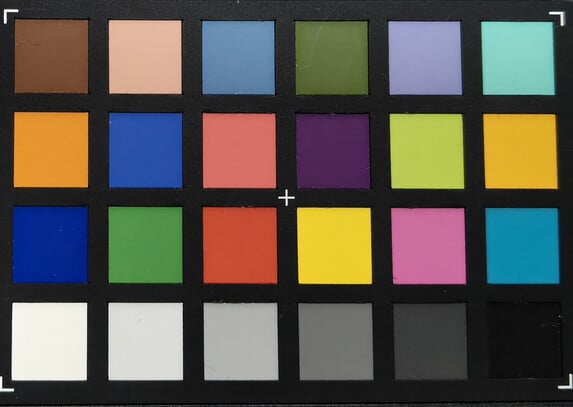

显示屏 - 明亮的 AMOLED
在开启亮度传感器的情况下,Oppo 雷诺 13 Pro 5G 的屏幕在日常使用中可达到 987 cd/m² 的峰值亮度。一些竞争对手的屏幕亮度更高一些,而 小米 Poco F7 Ultra则完全不同。不过,Oppo 雷诺 13 Pro 的 AMOLED 显示屏可以轻松满足日常使用需求,即使是在户外明亮的日子里也是如此。
在低亮度下,我们测得的闪烁频率约为 93 Hz,因此敏感人群在购买前应先试用一下屏幕。
如果选择 "Pro "作为色彩设置,各个色调的显示会相当准确,而且不会出现偏蓝现象。
| |||||||||||||||||||||||||
Brightness Distribution: 93 %
Center on Battery: 987 cd/m²
Contrast: ∞:1 (Black: 0 cd/m²)
ΔE ColorChecker Calman: 1.25 | ∀{0.5-29.43 Ø4.78}
ΔE Greyscale Calman: 2.4 | ∀{0.09-98 Ø5}
99.7% sRGB (Calman 2D)
Gamma: 2.26
CCT: 6688 K
| Oppo Reno13 Pro AMOLED, 2800x1272, 6.8" | Xiaomi Poco F7 Ultra Flow AMOLED, 3200x1440, 6.7" | Xiaomi 15 Pro AMOLED, 3200x1440, 6.7" | OnePlus 13R AMOLED, 2780x1264, 6.8" | Realme GT 6 AMOLED, 2780x1264, 6.8" | |
|---|---|---|---|---|---|
| Screen | 34% | 6% | 23% | 27% | |
| Brightness middle (cd/m²) | 987 | 1846 87% | 1016 3% | 1213 23% | 975 -1% |
| Brightness (cd/m²) | 958 | 1850 93% | 1017 6% | 1206 26% | 974 2% |
| Brightness Distribution (%) | 93 | 93 0% | 98 5% | 97 4% | 98 5% |
| Black Level * (cd/m²) | |||||
| Colorchecker dE 2000 * | 1.25 | 1.2 4% | 1.15 8% | 1 20% | 0.8 36% |
| Colorchecker dE 2000 max. * | 3.34 | 2.9 13% | 3.57 -7% | 2.3 31% | 1.4 58% |
| Greyscale dE 2000 * | 2.4 | 2.3 4% | 1.9 21% | 1.6 33% | 0.9 62% |
| Gamma | 2.26 97% | 2.25 98% | 2.2 100% | 2.22 99% | 2.22 99% |
| CCT | 6688 97% | 6707 97% | 6677 97% | 6546 99% | 6467 101% |
* ... smaller is better
Screen Flickering / PWM (Pulse-Width Modulation)
| Screen flickering / PWM detected | 93 Hz Amplitude: 12 % | ||
The display backlight flickers at 93 Hz (worst case, e.g., utilizing PWM) . The frequency of 93 Hz is very low, so the flickering may cause eyestrain and headaches after extended use. In comparison: 53 % of all tested devices do not use PWM to dim the display. If PWM was detected, an average of 8108 (minimum: 5 - maximum: 343500) Hz was measured. | |||
固定缩放级别和不同亮度设置下的测量系列(最低亮度下的振幅曲线看起来很平,但这是缩放造成的。信息框显示的是最小亮度下的振幅放大图)
Display Response Times
| ↔ Response Time Black to White | ||
|---|---|---|
| 1.5 ms ... rise ↗ and fall ↘ combined | ↗ 0.6 ms rise | |
| ↘ 0.9 ms fall | ||
| The screen shows very fast response rates in our tests and should be very well suited for fast-paced gaming. In comparison, all tested devices range from 0.1 (minimum) to 240 (maximum) ms. » 8 % of all devices are better. This means that the measured response time is better than the average of all tested devices (20.2 ms). | ||
| ↔ Response Time 50% Grey to 80% Grey | ||
| 2 ms ... rise ↗ and fall ↘ combined | ↗ 0.9 ms rise | |
| ↘ 1.1 ms fall | ||
| The screen shows very fast response rates in our tests and should be very well suited for fast-paced gaming. In comparison, all tested devices range from 0.165 (minimum) to 636 (maximum) ms. » 8 % of all devices are better. This means that the measured response time is better than the average of all tested devices (31.6 ms). | ||
性能、排放和电池续航时间 - 速度不快,但续航时间长
采用 联发科 Dimensity 8350处理器,而不是高端 SoC,制造商选择了一款刚刚跻身上流社会的处理器。在日常使用中,你可以期待一个流畅的系统。即使是要求稍高的任务,也能快速完成。不过,如果你想要真正的高端动力,还是竞争对手更适合你。
UFS 3.1 内存与同价位手机相比速度较慢。
外壳上的热量积聚实际上非常明显:我们在长时间负载后测得的温度高达 51.1 °C。在多次运行基准测试后,SoC 也会出现明显的节流现象,有时只能提供原来一半甚至三分之一的电量。
底部边缘的扬声器得到听筒的支持,两者合在一起可以发出相当大的声音。声音均衡而饱满。如果再次以最大音量按下音量键,"超大音量模式 "将被激活,这将使智能手机在嘈杂的环境中更加清晰可闻。不过,在该模式下,高音尤其会被增强,在安静的环境中声音会变得难听。
手机有多种音频编解码器,可以通过蓝牙轻松连接耳机或扬声器。
Oppo 安装了一块容量为 5,800 mAh 的电池。这意味着,在我们的 Wi-Fi 测试中,这款手机的续航时间超过 23 小时,足够正常使用至少两天。手机充电功率可达 80 瓦,最多一小时即可充满电。
| Geekbench AI | |
| Single Precision NPU 1.5 | |
| Oppo Reno13 Pro | |
| Average MediaTek Dimensity 8350 (1106 - 1131, n=3) | |
| Average of class Smartphone (80 - 5210, n=60, last 2 years) | |
| Half Precision NPU 1.5 | |
| Average MediaTek Dimensity 8350 (4488 - 4555, n=3) | |
| Oppo Reno13 Pro | |
| Average of class Smartphone (80 - 36297, n=60, last 2 years) | |
| Quantized NPU 1.5 | |
| Average of class Smartphone (133 - 49889, n=60, last 2 years) | |
| Average MediaTek Dimensity 8350 (4546 - 4549, n=3) | |
| Oppo Reno13 Pro | |
| Oppo Reno13 Pro | Xiaomi Poco F7 Ultra | Xiaomi 15 Pro | OnePlus 13R | Realme GT 6 | Average 512 GB UFS 3.1 Flash | Average of class Smartphone | |
|---|---|---|---|---|---|---|---|
| AndroBench 3-5 | 61% | 83% | 71% | 50% | -5% | 8% | |
| Sequential Read 256KB (MB/s) | 2008 | 4002.68 99% | 3998.65 99% | 3987.44 99% | 3452.12 72% | 1872 ? -7% | 2228 ? 11% |
| Sequential Write 256KB (MB/s) | 1637 | 3464.43 112% | 3673.38 124% | 3201.32 96% | 3211.78 96% | 1324 ? -19% | 1851 ? 13% |
| Random Read 4KB (MB/s) | 237 | 311.24 31% | 409.67 73% | 374.54 58% | 315.76 33% | 288 ? 22% | 296 ? 25% |
| Random Write 4KB (MB/s) | 411 | 411.78 0% | 555.55 35% | 542.13 32% | 397.65 -3% | 355 ? -14% | 337 ? -18% |
(-) The maximum temperature on the upper side is 51.1 °C / 124 F, compared to the average of 35.2 °C / 95 F, ranging from 21.9 to 247 °C for the class Smartphone.
(-) The bottom heats up to a maximum of 48.2 °C / 119 F, compared to the average of 34 °C / 93 F
(+) In idle usage, the average temperature for the upper side is 25.7 °C / 78 F, compared to the device average of 32.9 °C / 91 F.
3DMark Steel Nomad Stress Test
| 3DMark | |
| Wild Life Stress Test Stability | |
| Xiaomi 15 Pro | |
| Xiaomi Poco F7 Ultra | |
| Oppo Reno13 Pro | |
| Realme GT 6 | |
| OnePlus 13R | |
| Wild Life Extreme Stress Test | |
| Xiaomi 15 Pro | |
| Xiaomi Poco F7 Ultra | |
| Realme GT 6 | |
| Oppo Reno13 Pro | |
| OnePlus 13R | |
| Solar Bay Stress Test Stability | |
| Xiaomi 15 Pro | |
| Xiaomi Poco F7 Ultra | |
| Realme GT 6 | |
| OnePlus 13R | |
| Oppo Reno13 Pro | |
| Steel Nomad Light Stress Test Stability | |
| Xiaomi 15 Pro | |
| Xiaomi Poco F7 Ultra | |
| OnePlus 13R | |
| Oppo Reno13 Pro | |
| Realme GT 6 | |
Oppo Reno13 Pro audio analysis
(+) | speakers can play relatively loud (87.2 dB)
Bass 100 - 315 Hz
(-) | nearly no bass - on average 21.6% lower than median
(±) | linearity of bass is average (11.9% delta to prev. frequency)
Mids 400 - 2000 Hz
(±) | higher mids - on average 6% higher than median
(+) | mids are linear (5.3% delta to prev. frequency)
Highs 2 - 16 kHz
(±) | higher highs - on average 5.3% higher than median
(+) | highs are linear (4.7% delta to prev. frequency)
Overall 100 - 16.000 Hz
(±) | linearity of overall sound is average (18.6% difference to median)
Compared to same class
» 21% of all tested devices in this class were better, 9% similar, 70% worse
» The best had a delta of 11%, average was 35%, worst was 134%
Compared to all devices tested
» 41% of all tested devices were better, 8% similar, 51% worse
» The best had a delta of 4%, average was 24%, worst was 134%
Realme GT 6 audio analysis
(+) | speakers can play relatively loud (91 dB)
Bass 100 - 315 Hz
(-) | nearly no bass - on average 23.9% lower than median
(±) | linearity of bass is average (7.9% delta to prev. frequency)
Mids 400 - 2000 Hz
(+) | balanced mids - only 4.1% away from median
(+) | mids are linear (4.2% delta to prev. frequency)
Highs 2 - 16 kHz
(±) | higher highs - on average 5.6% higher than median
(+) | highs are linear (4.1% delta to prev. frequency)
Overall 100 - 16.000 Hz
(±) | linearity of overall sound is average (17.9% difference to median)
Compared to same class
» 15% of all tested devices in this class were better, 8% similar, 76% worse
» The best had a delta of 11%, average was 35%, worst was 134%
Compared to all devices tested
» 36% of all tested devices were better, 8% similar, 56% worse
» The best had a delta of 4%, average was 24%, worst was 134%
| Oppo Reno13 Pro 5800 mAh | Xiaomi Poco F7 Ultra 5300 mAh | Xiaomi 15 Pro 6100 mAh | OnePlus 13R 6000 mAh | Realme GT 6 5500 mAh | |
|---|---|---|---|---|---|
| Battery runtime | -21% | 3% | 9% | -17% | |
| WiFi v1.3 (h) | 23.3 | 18.4 -21% | 24.1 3% | 25.3 9% | 19.3 -17% |
| Reader / Idle (h) | 51.6 | 38.3 | 31.3 | ||
| H.264 (h) | 37.1 | 40.5 | 28.7 | ||
| Load (h) | 4.4 | 3.5 | 3.3 |
Notebookcheck 总体评分

Oppo Reno 13 Pro 5G 是一款高品质智能手机,电池续航时间长,价格公道。
不过,您需要牺牲一些顶级功能和性能。
Oppo Reno13 Pro
- 06/22/2025 v8
Florian Schmitt
可能的替代品比较
Transparency
The selection of devices to be reviewed is made by our editorial team. The test sample was provided to the author as a loan by the manufacturer or retailer for the purpose of this review. The lender had no influence on this review, nor did the manufacturer receive a copy of this review before publication. There was no obligation to publish this review. As an independent media company, Notebookcheck is not subjected to the authority of manufacturers, retailers or publishers.
This is how Notebookcheck is testing
Every year, Notebookcheck independently reviews hundreds of laptops and smartphones using standardized procedures to ensure that all results are comparable. We have continuously developed our test methods for around 20 years and set industry standards in the process. In our test labs, high-quality measuring equipment is utilized by experienced technicians and editors. These tests involve a multi-stage validation process. Our complex rating system is based on hundreds of well-founded measurements and benchmarks, which maintains objectivity. Further information on our test methods can be found here.




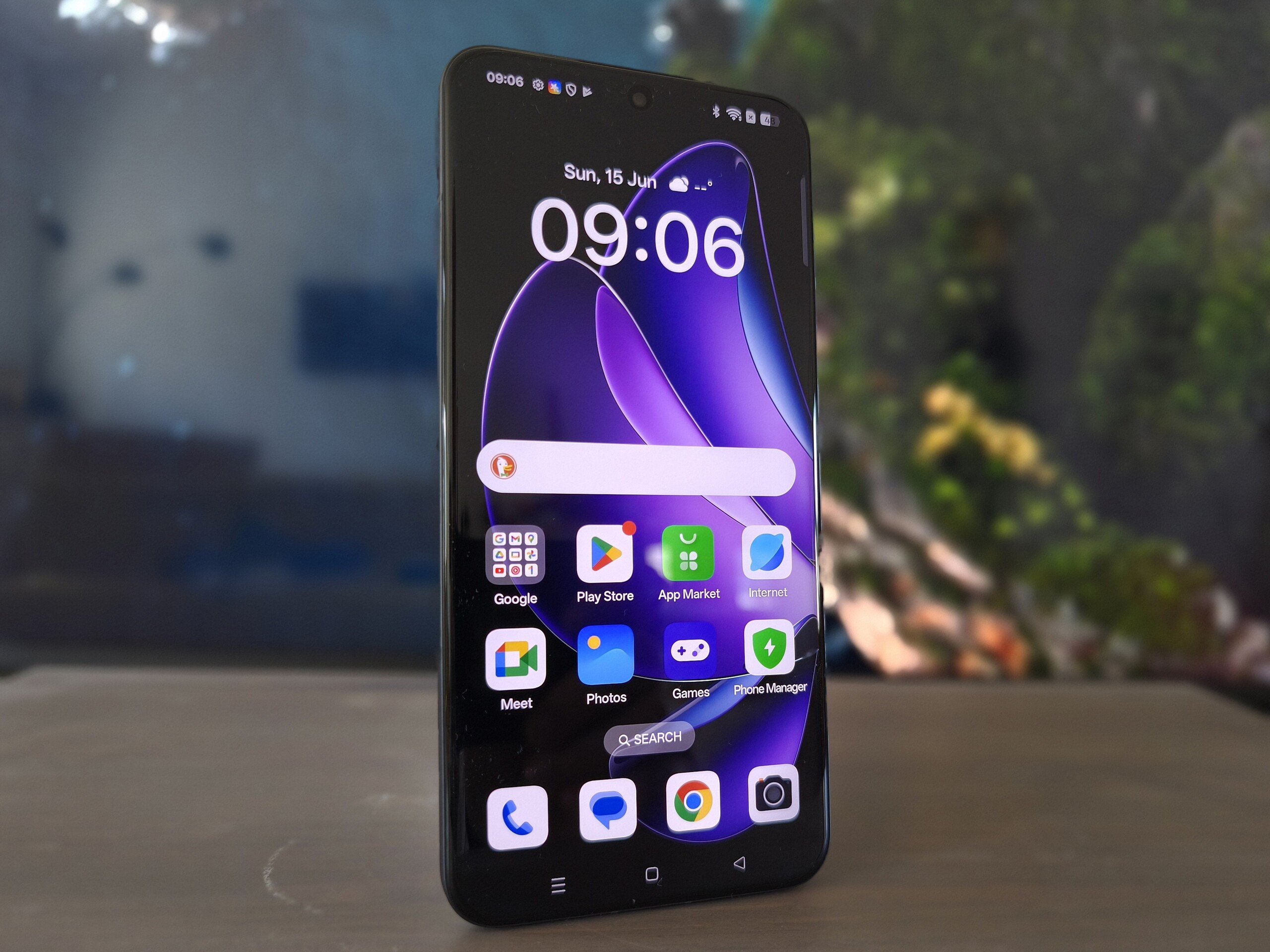

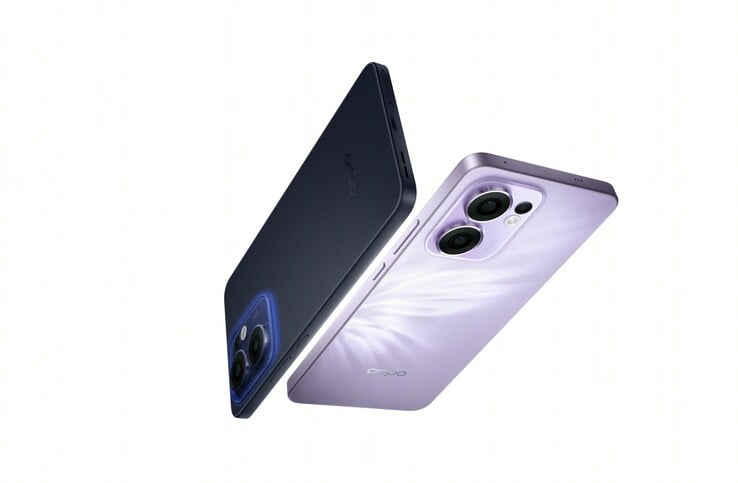











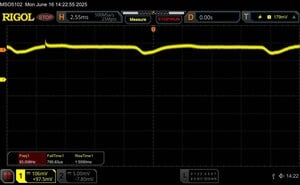





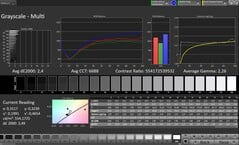
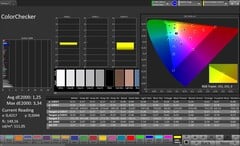
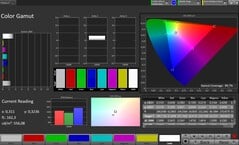

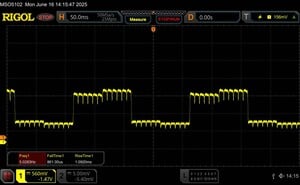
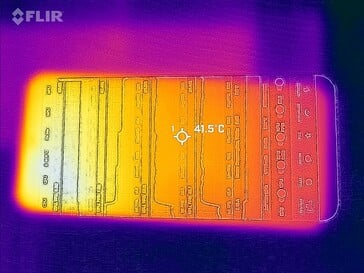
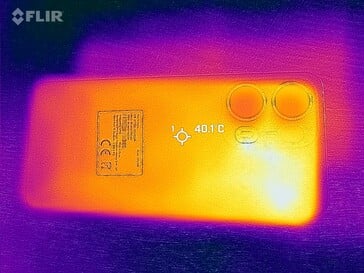
 Total Sustainability Score:
Total Sustainability Score: 
